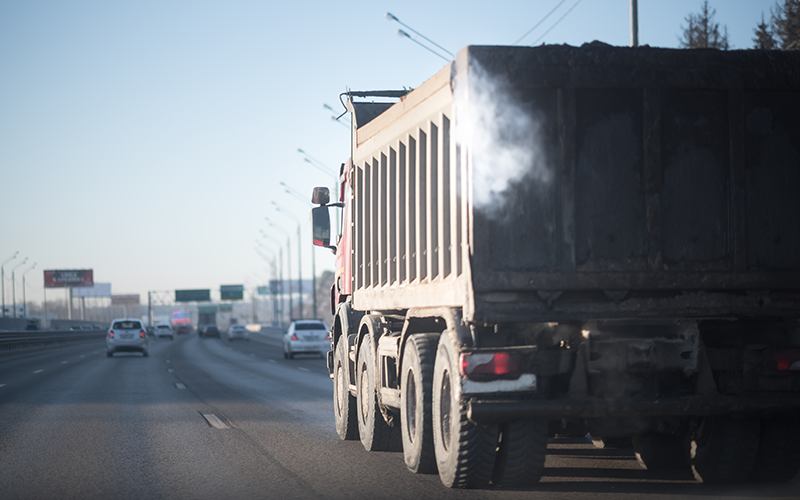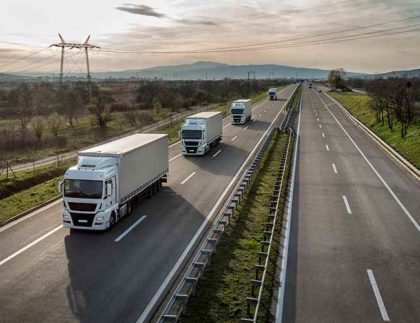

For many years, the exhaust emission standards constituted one of the significant topics for the European TFL industry. Following changes in the CO2 emission regulations allows to draw many conclusions on EU transport. Changes in exhaust emission standards are not only a challenge for car manufacturers but also a factor affecting the reality of professional drivers and carriers. As technology advances, EU regulations on exhaust emissions evolve, imposing increasingly more restrictive requirements on trucks traveling European roads.
In this article, we will present a brief historical background of exhaust emission standards, starting from the Euro 1 standard, introduced in 1993, all the way to the currently applicable standards and the ones coming in the next few years – Euro 6 and Euro 7. We will focus on issues that defined the current regulations and look into the future, analyzing the challenges for the industry.
We will also compare the emission limits for gasoline engines and Diesel engines. Read ahead, as we expand on these topics, analyzing the latest trends, regulations and challenges related to European exhaust emission standards.
Why are exhaust emission standards important?
The CO2 emission regulations are an important element of global efforts for environmental protection and public health. Exhaust emission standards have a beneficial impact on air quality and the reduction of harmful substances leads to a decrease of negative impact of transport on the atmosphere. This is especially significant in the context of statistics that confirm road transport as one of the main problems contributing to EU air pollution – it accounts for over 30% of nitrogen oxides and over 20% carbon oxides emitted to the atmosphere.
Initial regulations: the R49 document and the introduction of the Euro 1 standards
As we know, the need to introduce exhaust emission standards stems from the necessity to limit the negative impact of automotive industry on the environment. One of the first significant steps in this direction was the R49 document, adopted as early as the 1980s. However, a significant change did not occur until the early 1990s – a brand new stage of regulations, the Euro exhaust emission standards developed by the European Committee.
Overview of introduced limitations
The R49 document referred to maximum allowed exhaust emission levels in car engines. The purpose of the regulations was to reduce harmful substances emitted by vehicles, especially nitrogen oxides and hydrocarbons.
The Euro 1 standard was the first step towards more restrictive requirements that, at that stage, were imposed on cars and trucks with a permissible total weight of up to 3.5 tons. The change stipulated that new vehicles had to meet specific standards to be approved for sale on the European market. It was those regulations that led to the common use of exhaust catalytic converters by car manufacturers. It was an impulse for innovation and developing more effective systems, which in later years was regularly further motivated by other, increasingly more restrictive Euro standards.
Standards evolution: from Euro 1 to Euro 3
The introduction of the Euro 1 standard was a revolutionary step and had a significant impact on reducing harmful substances generated by EU road transport. The next versions of the regulations, i.e. the 1997 Euro 2 standard and the Euro 3 standard introduced 4 years later, continued that policy, thereby responding to the environmental challenges related to the TFL industry development.
Gradual tightening emission requirements
The exhaust emission standards stipulated in the Euro 2 regulation applied not only to cars and trucks but also to two-wheel vehicles. They significantly reduced the admissible exhaust emission compared to the first Euro standard. The next step of tightening the regulations occurred in 2001, when the introduction of the Euro 3 standard led to the differentiation of requirements related to the admissible exhaust emission class for cars with gasoline and Diesel engines.
Euro 4 and Euro 5 standards: response to growing environmental problems
The Euro 4 regulations entered into force in 2006 and, much like the previous standard, they were applicable under the Directive 98/69/EC and 2022/80/EC, while regarding two- and three-wheel vehicles – under the Regulation 168/2013.
While cars with gasoline engines were exempted from the requirements on particulate matter emission applicable at that time, a strong emphasis was placed on reducing Diesel engine emissions – that was yet another revolution in the industry and the impact of emission standards on the manufacturing of Diesel engine vehicles was undeniable.
Already in 2011 a new standard appeared – Euro 5, which led to the mass use of particulate matter filters in vehicles. The new exhaust emission standards ensured that pollution released into the atmosphere was reduced multiple fold.
Impact on manufacturers and vehicle types
Such restrictive changes had an evident impact on the automotive industry. They required car manufacturers to introduce more advanced emission control systems, which encouraged intensification of works on new drive technologies.
It was the Euro 4 standard that made the use of advanced exhaust catalytic converters mandatory and the market was introduced to AdBlue systems, i.e. aqueous urea solution limiting the amount of nitrogen oxides emitted.
The impact of exhaust emission standards on vehicle manufacturing was significant, but, as expected, those changes led directly to the improvement of air quality, limiting negative impact of transport on the natural environment. By imposing increasingly more restrictive exhaust emission standards, the regulations led to the transformation of the automotive industry towards more sustainable and environmentally-friendly solutions.
Current challenges: the Euro 6 standard and its updates
Ever since it entered into force in 2014, the EURO 6 standard was updated several times by introducing even more restrictive emission regulations for CO2 and other chemical compounds. As before, the goal of the new standards was to further reduce the emissions of nitrogen oxides, particulate matter (PM), as well as hydrocarbons and carbon oxides – compared to the Euro 5 standard, the reduction level for these substances was up to several dozen percent (e.g. PM emission reduction by 66%). The next standards – Euro 6c and Euro 6d, which were adopted successively from September 2019, led to further tightening of European regulations, as well as changing the standards on conducting emission tests.
How the standards affect new car models
The impact of emission standards on vehicle manufacturing is increasingly larger – car manufacturers introduce, among others, new fuel injection technologies, allowing for more precise control the of combustion process, and advanced engine management systems, which can monitor and control emissions in real time, adjusting engine operating parameters to the current driving conditions.
Towards Euro 7: is this the end of combustion cars?
With regard to all subsequent exhaust emission standards, especially in the context of the currently applicable one and the one yet to come – Euro 6 and Euro 7 – the evolution of standards is heading towards increasingly more restrictive requirements.
A lot of concerns in the industry are related to the Euro 7 standard, which is expected to enter into force on:
- 1 July 2030 – for cars and minibuses;
- 1 July 2031 – for buses and trucks.
The final form of regulations to be implemented by the new exhaust emission standard is currently under discussion. The manufacturers, represented, among others, by the ACEA (European Automobile Manufacturers Association) point out the need for realistic adjustment of expectations to the EU’s economic situation by proposing, among other things, placing more focus on limiting other emission sources.
When it comes to the new exhaust emission class, there will undoubtedly be a clear difficulty related to further limiting emissions from traditional combustion vehicles. As electric vehicles, which are growing in popularity, currently seem to be the most effective way to meet such restrictive regulations, the lengthy and costly process associated with this shift and introducing such standard creates a challenge for the automotive industry and will impact the consumers – for example, through the increase in vehicle prices.
How to check the exhaust emission class of your vehicle?
Information on the exhaust emission class standard can be found, for example, in the registration document, vehicle registration certificate, manufacturer documents or type-approval certificate. The exhaust emission standard can also be checked based on the vehicle manufacturing year (remember to also include the permissible total weight).
Diesel vs. gasoline: how do the exhaust standards differ?
The exhaust emission standards for cars with a diesel and gasoline engine differ due to their different combustion characteristic. Modern standards impose restrictive requirements on both types of engines, with the goal of reducing their negative environmental impact.
Comparing emission limits for different types of engines
Limits differ depending on the specific exhaust emission standard. How do they look in the context of the latest standard – Euro 6?
Euro 6 standard – gasoline engines:
- CO – 1.0 g/km;
- Hydrocarbons – 0.10 g/km;
- Nitrogen oxide – 0.06 g/km;
- Solid particles – 0.005 g/km.
Euro 6 standard – Diesel engines:
- CO – 0.50 g/km;
- HC + NOx – 0.17 g/km;
- Nitrogen oxide – 0.08 g/km;
- Solid particles – 0.005 g/km.






